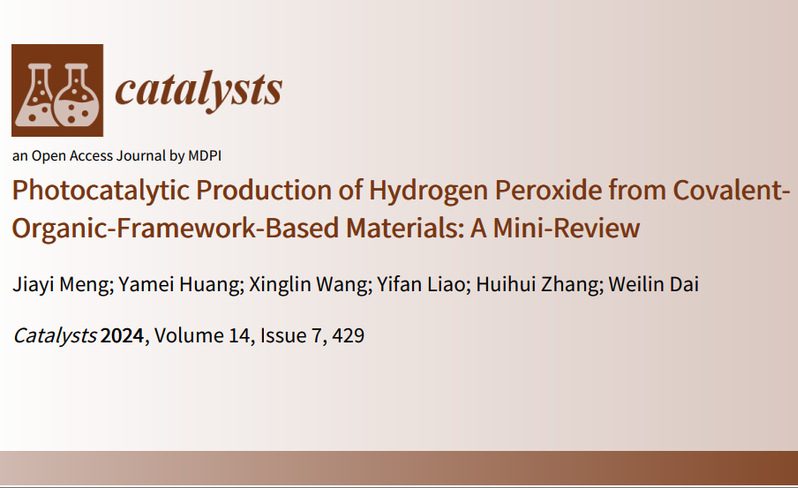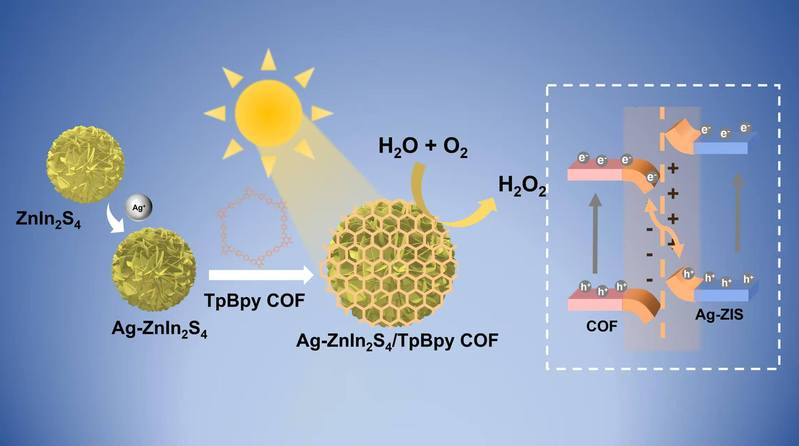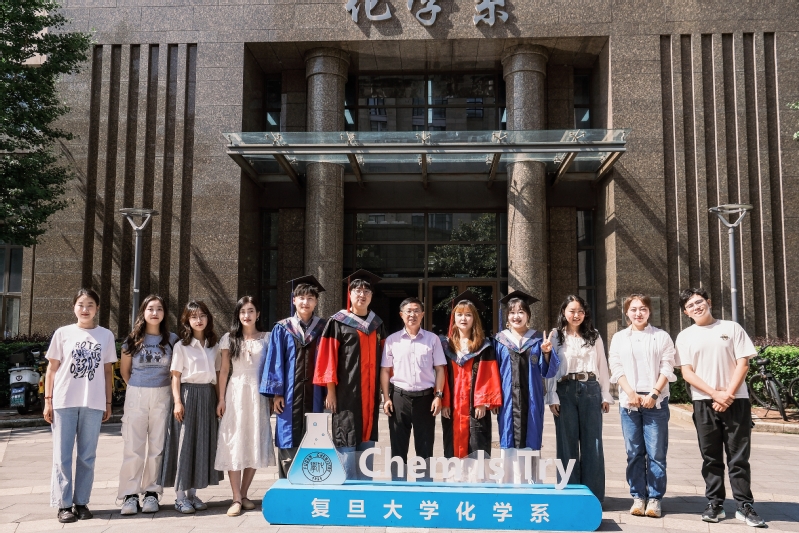Hydrogen peroxide (H2O2) is one of the most environmentally friendly and versatile chemical oxidizing agents, with only O2 and H2O as reaction products. It is widely used in environmental protection, industrial production, and medical fields. At present, most of the industrial production of H2O2 adopts anthraquinone oxidation, but there are shortcomings such as pollution of the environment and large energy consumption. Covalent organic frameworks (COFs) are a class of porous crystalline materials formed by organic molecular building blocks connected by covalent bonds. The ordered conjugated structure of COFs not only facilitates the absorption of light energy but also promotes the transport of excited-state electrons. Therefore, the photochemical synthesis of H2O2 from water and oxygen using photocatalysts based on COFs as a green route has attracted much attention. In this review, we provide an overview of recent studies on COFs as photocatalysts and the different mechanisms involved in the photocatalytic production of hydrogen peroxide. Then, we summarize the various strategies to improve the performance. Finally, we outline the challenges and future directions of COFs in practical applications. This review highlights the potential and application prospects of COFs in the photochemical synthesis of H2O2, aiming to provide guidance for the design of COF-based catalysts and the optimization for photocatalytic production of H2O2, in order to promote scientific development and application in this field.

文章链接:https://doi.org/ 10.3390/catal14070429
 Wei-Lin Dai Group
Wei-Lin Dai Group



